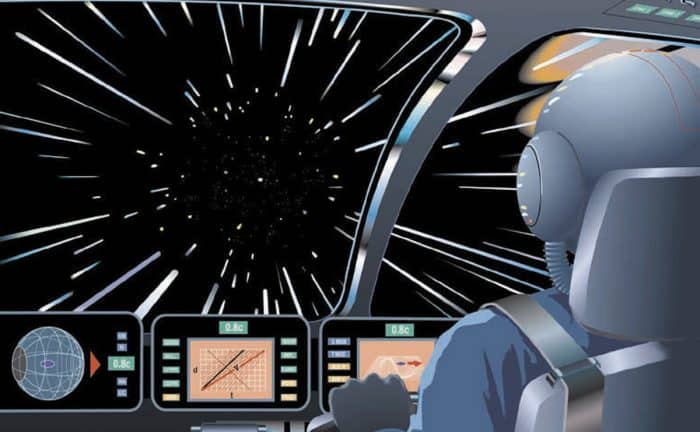Our textbooks usually imply that nothing can travel faster than the light. But, this statement needs to be dissected at a granular level to be understood. The Distant Stars in the unchartered Space cannot be discovered, if we never break the Light Barrier. Hence, there is a need to ask this crucial question, ‘if there is anything that travels faster than light.’ The basis on which these textbooks justify the statement is the special theory of relativity, which explains that this may be achieved only by particles with zero rest mass. The hypothesis of the existence of Tachyons particles put the debate to rest that it is possible for Tachyons to travel at superluminal speeds. However, physicists disagree on the possibility of the existence of such particles, given they do not obey causality, and an infinite amount of energy would be required to move them at such high speeds. The following statement explains the phenomenon appropriately.
The Faster Something Travels, The More Massive It Gets, And The More Time Slows – Until You Finally Reach The Speed Of Light, At Which Point Time Stops Altogether
This is the reason why the particles become extremely massive when most of the modern particle accelerators achieve superluminal speeds. Some of the events that occur at superluminal speeds are as follows.
Expansion of Space
After Big Bang, the Expansion of universe took place much faster than the speed of light. The current evidence of the fact can be seen in the phenomenon called Metric Expansion of Space. The rate at which space is expanding is far greater than the speed of light and that is why light cannot travel across the universe. Since no particles are involved in the expansion of the universe and its vacuum, it can travel at such high speeds.
Flashlight Shift
Imagine you had a flashlight or a laser pointing at the moon, and you quickly moved it to another heavenly body. Now, in theory, this would qualify as the beam of light traveling a distance of, say, many light years away from the moon to this object in a matter of seconds, making the beam travel faster than light. If the flashlight was a laser or just the plain flashlight, the point remains that ‘no material object’ has traveled with that speed. Also note that laser is a particular kind of light.
Quantum Entanglement
Quantum entanglement is the phenomenon where a pair or group particles form a bond when brought close to each other. Even when separated, the quantum state of such pairs and groups is not defined independently of each other. Simply understood, if two electrons are made to vibrate close to each other, they will do so in unison. Once separated, the electrons will behave as if connected with a USB cable or an umbilical cord, even if physically they are located light years away from each other. If one electron is deliberately moved, the other will detect this movement in an instance, much faster than the speed of light. However, useful information transfer is not possible using Quantum Entanglement, since this barrier breach of light is random and chaotic. More on this at ERP Experiment.
Exotic Matter
One way to break light barrier is to travel through Exotic/Negative Matter, which comprises of Tachyons particles, discussed earlier. So we know that there is no evidence or agreement for the existence of such matter. However, there are two ways to achieve that, hypothetically speaking,
- Much like the Time-Space warps shown in movies, these warps can help you teleport from one place to another in no time. Compressing the space in front and expanding the space behind, push yourself into a space-time warp.
- By using the Wormhole, also a hypothesis. Wormholes supposedly are tunnel-like structures that connect different points in spacetime that may be billions of light years away from each other. Traveling through a wormhole will take place at speed of light locally.
A model of ‘folded’ space-time illustrates how a wormhole bridge might form with at least two mouths that are connected to a single throat or tube (via Space)
Almost everyone of us wants to know what traveling at the speed of light feels like, however, it’s best not to become massive while doing so!

